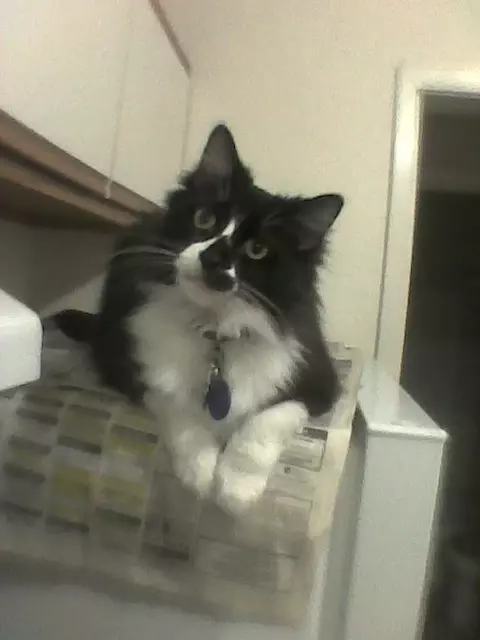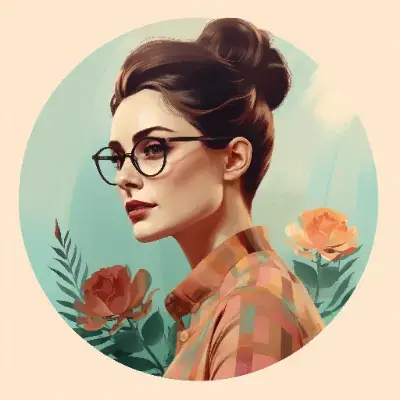
If there’s nothing between you and an object you can feel it at a distance. Texture is a little dulled, and some textures are easier to feel than others, but there’s also a whole second kind of texture that we call color. As light gets dimmer it gets harder to feel the difference between those textures, and it gets harder to feel the distance to things, until there is nothing left but a single all encompassing flat texture at a single unknowable distance which we call dark.
Also, some objects only partially block your ability to feel what’s behind them, and things like windows are designed to be so easy to feel through that it’s hard to feel them at all. Unless they get dirty. Then you can feel the dirt on them.

I find this somewhat sad but also quite beautiful. Those with sight often feel bad for the blind, as they miss out on much of the world we see, but simultaneously it appears as though the blind experience a world of its own beauty that those with vision could never feel or imagine. I don’t often pay mind to textures or feel objects that are out of reach. If you and I are standing in front of a waterfall, I suppose everything is still there for you except for how it looks - so who am I to determine that what you’re seeing in your minds eye is any less spectacular? I can say with certainty that when I’m standing in the middle of a deep forest, the way it looks is an afterthought when compared to what it makes me feel. Maybe both worlds are equally beautiful.

I assume that, over time, you’ve memorized where everything in your living space is. You have some idea of what shape the space around you takes.
Seeing is knowing what shape a space takes without trial and error. The depth of a room or the texture of a couch. Knowing where an item is without having to touch it, or be told where it is.
How it feels… it feels safe. Seeing makes me feel safer. That’s the only word that comes to mind.

Like hearing but with color.
No, seriously, it’s impossible to accurately convey. You can talk about the mechanics, the use cases, what you can do with it, but you cannot convey “how it is”, same as a bat cannot convey “how sonar is”.

Only good answer, really - can only answer in the terms of other senses, however, since colour is meaningless too: “It’s like being able to hear the texture of things, even at a great distance.”

A million fingers going in all directions to sense how far everything is away from you and tell what property’s things probably have

It’s like knowing where everything in front of you is without having to touch or hear it. Sight works with your other senses too. For example, if a pillow is laying on the floor in an unfamiliar room I’ll know what shape it, how far away it is, and that if I pick it up it’ll feel soft. If the pillow was really gross looking I’d be able to tell without smelling it first.

that if I pick it up it’ll feel soft.
https://www.thisiscolossal.com/2020/01/marble-pillows-by-hakon-anton-fageras/
I really like these sculptures, but would hate them in person, because not soft.

I think I might mention something about perspective and about lines. How everything in essentially flattened into 2d, so everything has a contour. So it is like feeling a 2d shape on say a table, like a circular dish, but what you are seeing is actually a 3d ball.
Further, things can be obscured by other things that are closer, which are in front. It’s a bit like tracing the dish with your finger, but not knowing that there is a smaller dish hidden beneath it. For example a ball is behind another ball.
Things that are further away are smaller than things that are closer. As the ball moves further away, the 2d contour becomes smaller. So in the analogy from before, the dish would shrink until it becomes too small to sense.
Finally, instead of just having a few fingers to trace these contours, we have millions of them, so we can effectively sense all contours all at once and tiny notice changes in real time.
Well I suppose I could extend the analogy further by saying that colors are like the physical textures that you feel when moving your finger over an object. The dish could be made from wood, plastic, porcelain and so on, and it is like we have fingers all over the dish at every point at once. Such textures, just like the colors, can be quite intricate.
I could go on but let’s leave it at that.

I would describe it as a cacaphonic symphony that you eventually get used to. It packs as much information into one sense as you can get from your other four put together.
Much like how you can discern an individual instrument type in a symphony, sight lets you discern individual objects from afar, and gives you a mostly accurate summary of its basic properties.
Also much like with sound, it can be very appealing or unappealing, depending. There’s an intrinsic beauty to the sense itself though. Every object has color, for instance, and color is more like smell. It can give you hints about what something is, but its mostly an arbitrary blend of different “flavors” that combine to create more complex examples.
It’s the super-sense, the one sense that binds them all. When one of your other four detects something, your first instinct is to locate it with sight to determine more information before you do anything else. You “look at it” first. Almost without fail.

It’s like Sex to me, I’ll never get it

Are you visually impaired? I work with a VI kiddo. He asked me why some walls feel different. I was completely stumped trying to describe a window. Have any tips?

Like echolocation on crack
